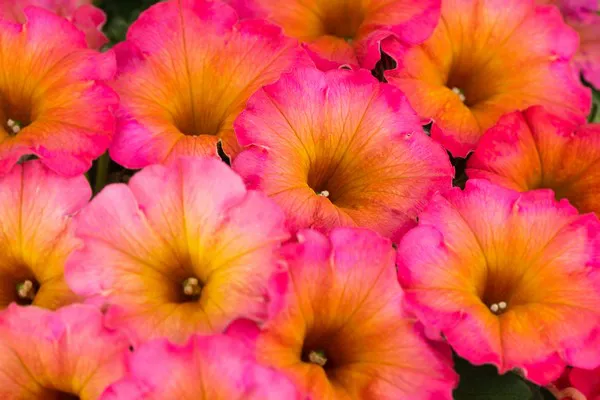For Dr. Salma Balaz, her fascination with flower colors began in her childhood while growing up in Cairo. She vividly remembers painting blue flowers at school, a rarity in a region where most flowers aren’t naturally blue. Fast forward to her doctoral studies at Wageningen University & Research in the Netherlands, where her passion for flower hues has evolved into a quest to unlock the secrets of petunias’ pigmentation.
In her recent research endeavor, Dr. Balaz is delving into the world of petunias and their vibrant colors. Pictured at work, she is meticulously collecting floral tissue samples from a white petunia for in-depth analysis of its pigments and the underlying genetics. Her precise approach involves wearing gloves and using forceps to ensure the genetic material remains undamaged, a crucial step in her study.
While white petunias are a natural occurrence, bright orange and yellow petunias are not. In 2015, one of her PhD advisors, Teemu Teeri, stumbled upon an orange petunia growing near a railway station in Helsinki. Intriguingly, this vibrant hue was attributed to an unauthorized genetic modification, leading to the prohibition of such plants in several countries.
Dr. Balaz, however, harbored a different ambition – to develop naturally orange petunias without introducing genes from other species. Her tool of choice is CRISPR–Cas9, a revolutionary gene-editing technology that enables precise alterations within the petunia’s genome. This method, celebrated for its speed, cost-effectiveness, accuracy, and efficiency, has gained acceptance in Europe and the United States.
The significance of her work extends beyond petunias, with potential applications in other crops. Take, for example, golden rice (Oryza sativa), enriched with β-carotene, which can alleviate vitamin A deficiencies in populations with limited dietary sources. Dr. Balaz’s research can potentially break through barriers in regions where genetically modified organisms face resistance. By unraveling the pigment pathway in petunias, she aims to offer a blueprint for generating orange hues in various plant species through gene editing.
In addition to her groundbreaking research, Dr. Balaz is passionate about being a role model for aspiring female scientists in Egypt. Her journey, facilitated by scholarships for her master’s and PhD programs abroad, is an inspiring example of determination and dedication. She aspires to motivate and empower other young female researchers to pursue their scientific ambitions globally. Dr. Salma Balaz, with her unwavering commitment to both her research and her mission to uplift aspiring scientists, is a remarkable force in the world of genetic coloration studies.


